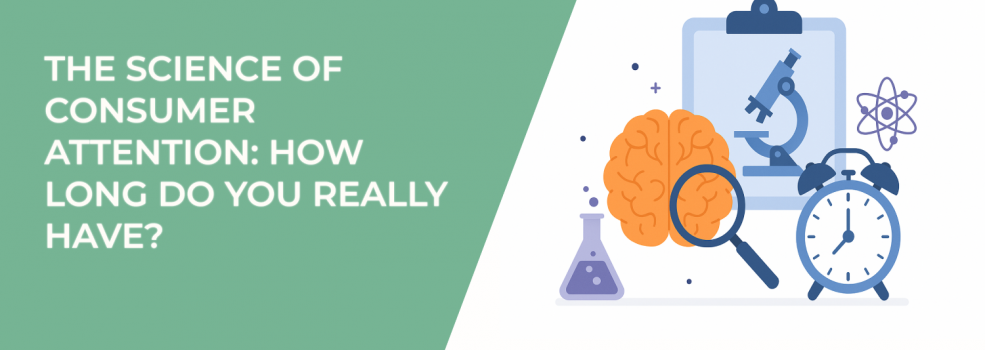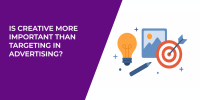Every advertiser, marketer, and business owner faces the same obstacle: catching and holding attention in a world where distractions multiply every second. Social feeds refresh endlessly, notifications fight for space, and your competition is just one thumb-swipe away.
So how much time do you really have to make an impression? The question sounds simple, but the answer is layered — and it’s at the heart of building campaigns that convert.
Let’s break it down step by step, using research, behavioral insights, and practical techniques you can apply to Facebook ads, Instagram campaigns, and beyond.
How Short Is Consumer Attention Really?
You’ve probably heard that the modern consumer has the attention span of a goldfish — around 8 seconds. That stat is often quoted, but it’s misleading. The truth is more nuanced.
Attention depends on context. Someone waiting in line at a coffee shop, casually scrolling through Instagram, has seconds at most. Meanwhile, someone actively researching a purchase may give far more time to content that feels useful.
Think of attention as layered stages:
-
Initial glance (1–3 seconds): Does the ad stand out enough to stop the scroll?
-
Focused interest (4–10 seconds): Does the headline, visual, or opening line convince them to keep watching or reading?
-
Deeper engagement (10+ seconds): Does the content deliver value that rewards continued attention?
This framework matters because it shifts the focus away from a fixed number. Instead, you’re asking: How do I design each stage so I don’t lose the audience?
For a deeper dive into how psychology drives those first moments of attention, see The Psychology of Facebook Ads: How to Hook Your Target Audience in Seconds.
Why People Tune Out
Losing attention is rarely random. It happens for very specific reasons. Among the most common:
-
Lack of relevance. If the message doesn’t align with someone’s needs, they’ll move on instantly.
-
Overused creative. Ads that look like every other post in the feed vanish into the background.
-
Slow payoff. If the value isn’t clear in the first few seconds, people won’t stick around to find it.
-
Cognitive overload. Walls of text, jargon, or too many visuals create fatigue.
There’s also a psychological angle. People are wired to avoid wasted effort. If your content doesn’t signal immediate usefulness or interest, the brain defaults to “ignore.”
To avoid wasted impressions, advertisers should also study Ad Fatigue on Facebook: How to Spot It Early and Fix It Fast.
Winning the First Few Seconds
The first seconds are your ad’s make-or-break moment. Your opening needs to be strong enough to disrupt the scroll and simple enough to process instantly.
Here’s how:
-
Clarity beats cleverness. A headline like “Cut your ad spend in half — here’s how” works better than vague slogans.
-
Use contrast in visuals. If most of the feed is polished lifestyle photography, a bold graphic or minimalist design may stand out.
-
Lead with curiosity. Ask short, thought-provoking questions. Example: “Are your campaigns losing 40% of clicks before they even start?”
Imagine two scenarios:
-
An ad opens with a generic slogan about “innovation.”
-
Another ad shows a clean chart with a red downward arrow and the line, “Why most campaigns lose attention in 3 seconds.”
Which one makes your thumb pause?
If you’re experimenting with different creative formats, you’ll want to read Ad Creative for Scroll-Stoppers: How to Design for Fast-Thumb Users.
Keeping Attention Once You Have It
Getting someone to stop scrolling is just step one. Holding their focus is harder. You need structure, pacing, and progression.
Practical ways to extend attention:
-
Layer your story. Start with a simple hook, then expand with supporting details. Example: lead with a problem, then show the solution.
-
Use pattern variation. Alternate between short, punchy statements and longer explanations. This keeps rhythm dynamic.
-
Reward curiosity. Offer quick wins early. If someone gives you 5 seconds, give them a reason to invest 10 more.
-
Guide the eye. Break content into digestible sections with bullets, whitespace, or simple visuals.
Attention is an exchange. If people feel they’re getting value for the time they spend, they’ll keep going.
And if you want to build campaigns that extend attention across the funnel, explore From Awareness to Conversion: Full Facebook Funnel Strategy.
The Takeaway
Consumer attention isn’t disappearing. It’s being filtered more aggressively than ever. You may only have seconds to prove relevance, but if you succeed, you can earn minutes — even hours — of engagement.
The science shows that attention is layered, fragile, and influenced by context. The strategy is simple: design campaigns that respect those limits, deliver immediate clarity, and reward curiosity at every step.

